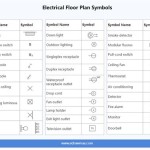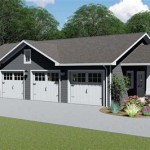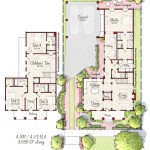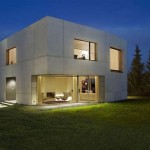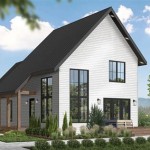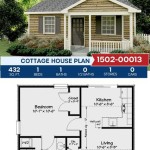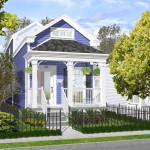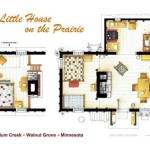Small House Plans: Maximizing Space with 3 Bedrooms
The demand for efficient and affordable housing solutions has led to increasing interest in small house plans, particularly those featuring three bedrooms. These designs offer a practical approach to homeownership, providing ample living space for families or individuals who require extra rooms for guests, home offices, or hobbies. This article explores the considerations, advantages, and key design aspects related to small house plans with three bedrooms.
Small house plans are defined by their compact footprint, typically ranging from 800 to 1500 square feet. The challenge in designing these plans lies in effectively utilizing every square inch to create a comfortable and functional living environment. Three-bedroom layouts within this limited space require careful planning to ensure each room meets the basic needs of its occupants without feeling cramped or restrictive.
Key Considerations for 3-Bedroom Small House Plans
Before embarking on the selection or customization of a small house plan with three bedrooms, several crucial factors must be taken into account. These factors impact the overall livability and practicality of the design, ensuring it aligns with the occupants' lifestyle and needs.
Space Optimization: This fundamental aspect dictates the success of a small house plan. Strategies such as open-concept living areas, built-in storage solutions, and multi-functional furniture are essential. Open layouts remove physical barriers between the living room, dining area, and kitchen, creating a sense of spaciousness. Built-in storage, such as shelving and cabinets, minimizes the need for bulky furniture, freeing up valuable floor space. Furniture designed for multiple purposes, like sofa beds or storage ottomans, further enhances space efficiency. Clever layout is crucial in a small home whether it's about the furniture placement or the actual placement of features such as windows and doors.
Bedroom Size and Configuration: While three bedrooms are the objective, the size and layout of each room must be carefully considered. The master bedroom generally requires more square footage than the secondary bedrooms. However, all bedrooms should accommodate a bed, a closet, and a small dresser or nightstand comfortably. Bunk beds or loft beds can be considered for children's rooms to maximize floor space for play or study areas. The arrangement of the bedrooms within the overall plan also influences privacy and noise levels. Separating the master bedroom from the secondary bedrooms can provide a greater sense of seclusion for the occupants. Consider if and where to place a bathroom relative to the bedroom to minimize walking distance.
Bathroom and Kitchen Efficiency: These spaces are vital to daily living and require meticulous design. In small house plans, combining the bathroom and laundry area can save space. Utilizing vertical space with tall cabinets and shelving in the kitchen maximizes storage capacity. Compact appliances, such as apartment-sized refrigerators and dishwashers, can further optimize space. The placement of the bathroom relative to the bedrooms and living areas should be convenient for all occupants. Efficient use of the walls is key.
Natural Light and Ventilation: Adequate natural light and ventilation are crucial for creating a comfortable and healthy living environment. Large windows and skylights can brighten up interiors and reduce the need for artificial lighting. Strategic window placement can also promote cross-ventilation, improving air circulation and reducing reliance on air conditioning. Moreover, windows can be placed such that they provide natural views of outdoor scenery to create an illusion of a larger space.
Advantages of Small House Plans with 3 Bedrooms
Choosing a small house plan offers several benefits, particularly in terms of cost-effectiveness, environmental impact, and maintenance requirements.
Affordability: Smaller homes are generally more affordable to build or purchase than larger ones. The reduced square footage translates to lower construction costs, property taxes, and utility bills. This makes homeownership accessible to a wider range of individuals and families. Furthermore, energy bills are significantly lower than in larger homes, and fewer materials used in construction generally means lower homeowner insurance.
Reduced Environmental Impact: Smaller homes consume fewer resources during construction and operation, resulting in a lower environmental footprint. Reduced energy consumption for heating, cooling, and lighting contributes to a more sustainable lifestyle. The decreased land usage for construction provides environmental benefits by mitigating urban sprawl. The overall carbon footprint of a smaller home is generally smaller due to fewer purchased goods, reduced need to drive, and lower amount of material to dispose of.
Easier Maintenance: Smaller homes require less time and effort to maintain. Cleaning, repairs, and landscaping are all more manageable in a compact space. This frees up time for occupants to pursue other interests and activities. Less cleaning supplies are needed, and there are fewer items to repair. The general upkeep requires less work than upkeep on a large home.
Increased Intimacy: A small home can encourage close-knit relationships among family members. Shared living areas promote interaction and create a sense of togetherness. The smaller scale of the home can foster a sense of warmth and connection. While proper privacy can still be maintained, the close spaces promote togetherness.
Design Elements for Maximizing Space in a 3-Bedroom Small House
The design of a small house plan requires innovative solutions to maximize space and functionality. Several key design elements can contribute to a more spacious and comfortable living environment.
Open-Concept Living Areas: As mentioned, integrating the living room, dining area, and kitchen into a single open space creates a sense of spaciousness and promotes social interaction. This layout eliminates the need for walls that would otherwise partition the space, making it feel larger and more inviting. Strategic use of furniture and rugs can define different zones within the open area without compromising the overall flow.
Vertical Space Utilization: Tall ceilings, loft spaces, and vertical storage solutions can significantly increase the usable space in a small house. Tall ceilings create a more airy and open atmosphere, while loft spaces can be used as additional living areas, bedrooms, or storage spaces. Vertical storage solutions, such as floor-to-ceiling shelves and cabinets, maximize storage capacity without taking up valuable floor space. Consider maximizing the height of the ceilings and extending cabinets upwards to take advantage of the extra open space in the home.
Multi-Functional Spaces and Furniture: Designing rooms that can serve multiple purposes is crucial for maximizing space in small house plans. A guest room can also function as a home office or a hobby room. Fold-away beds, sofa beds, and expandable tables are examples of furniture that can be adapted to different needs. Modular furniture can be adapted to suit the needs of your small house. Smart design allows for multi-functional spaces and maximizes the amount of space within the home.
Strategic Use of Light and Color: Light colors reflect light and make spaces appear larger, while dark colors absorb light and can make spaces feel smaller. Using a light color palette for walls, ceilings, and floors can create a more open and airy atmosphere. Mirrors can also be used to reflect light and create the illusion of more space. Natural light is a design element that can be utilized to make the small space seem larger and open.
Outdoor Living Spaces: Extending the living space outdoors can significantly enhance the perceived size of a small house. Patios, decks, and porches provide additional areas for relaxation, entertainment, and dining. These outdoor spaces can be designed to seamlessly connect with the interior living areas, blurring the boundaries between indoors and out. Even small porches or decks can increase the amount of space to relax and allow fresh air.
The key to successful small house plans with three bedrooms lies in thoughtful planning, efficient space utilization, and creative design solutions. By carefully considering the needs of the occupants and incorporating innovative design elements, it is possible to create a comfortable, functional, and stylish living environment within a compact footprint.

Small 3 Bedroom House Plan With Pictures 55sqm Plandeluxe

Small Home Plan With 3 Bedrooms House Floor Plans Exteriors

Floor Plan For Small 1 200 Sf House With 3 Bedrooms And 2 Bathrooms Evstudio

3 Bedroom House Plans Home Designs Nethouseplans

House Plans Robin 1 Linwood Custom Homes One Story Small Tiny

Small 3 Bedroom House Plans Interior Design Ideas

3 Bedroom House Plan With Images How To Choose The Right

3 Bedroom Small House Plans For Narrow Lots Nethouseplans

Simple Yet Elegant 3 Bedroom House Design Shd 2024031 Pinoy Eplans

Floor Plan For A Small House 1 150 Sf With 3 Bedrooms And 2 Baths Plans Ranch Bedroom

